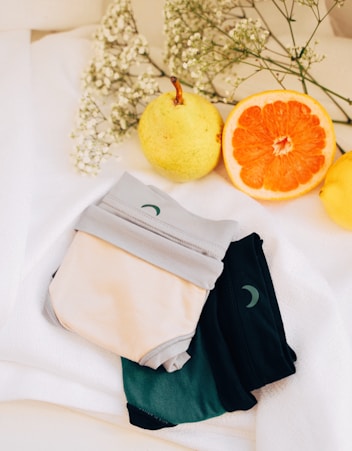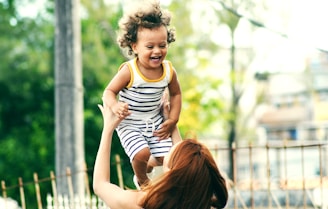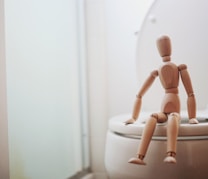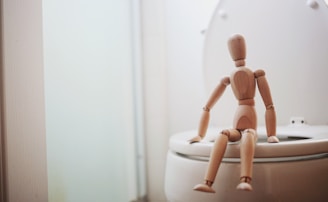Tried-and-True Toilet Training Techniques
Different strategies for toilet training your child. Figure out what works for your family.
PARENTING RESOURCES
Catherine Lau, M.ADS, BCBA
8/27/20236 min read


Let's talk about toilet training.
Toilet training: teaching a child to void (pee and poop) in the toilet
How early can I start toilet training with my child?
Every child is different. Some kids are ready to be toilet trained and can stay dry throughout the day as young as 18-24 months (Mayo Clinic, 2023). Other kids may be ready later. Try when you feel you and your child are ready to try (I'd suggest being fully committed to trying! This commitment really helps!), and if it's not clicking, don't sweat it, give it a break and try again later.
If your child is younger than 18 months (or is older and not quite getting it), feel free to read my blog post about elimination communication, which is an approach where the parent notices baby's cues indicating that they need to void, and the parent quickly trying to catch it somewhere else (i.e. in a container or sink). Elimination communication doesn't involve bladder training, where a child is encouraged to hold it in until they find a toilet.
Note on Night time toilet training:
Kids will be older when they are ready to be night-time dry, possibly around 5-7 years old.
Remember: always consult with your doctor if you have any concerns about your child's voiding/ toileting. They can offer guidance, recommendations, diagnosis or reassurance!
Different strategies to teach toilet training.
Which one sounds like the right-fit approach for you and your family?
1) Bladder Training
I worked under the supervision of a number of clinical supervisors, working with kiddos who have developmental disabilities and needed assistance toilet training. This is a method I found the fastest and most to-the-point, quick-and-dirty. I learned this from my very respected and wise supervisor, Kevin Cauley. Thank you Kevin for teaching me all that I know about motivation, learning, and the toilet. It is based off of Foxx and Azrin (1971)'s rapid approach to toilet training. More recently, Kroger and Sorensen (2010) have replicated this model successfully with parents, and saw success with two children with Autism Spectrum Disorder in 1-2 days, and were independently toilet trained in 5-10 days.
Here are the steps in the form of a checklist:
Bladder Training Steps
This approach takes parental commitment. It takes work, patience, and planning, but I have no greater joy than seeing my child void in the toilet (really, I celebrate big!), so in my opinion, it can be done in a positive, fun, and creative way (see creative tips in the section below).
In an ideal world, you would live with your child in the washroom all day, but I know, this is not really realistic or possible. However, this is what we would do in our training program and kids were often toilet trained in as little as a day (one-and-done!). Other kiddos, it took longer. But if you are committed and willing to commit a day to toilet training, do give it a shot! It is very effective in my experiences.
Set up:
Try to go through the steps of this bladder training checklist for an entire day in/or near the washroom. It may not be possible to live for a day in the washroom, but if you can do it, it's a fast way to teach and heavily reinforce toilet training.
Have a chair for the child and a chair for parent, to get comfortable and sit inside the washroom.
Child can stay in their underwear only (no pants or socks on) to make it easier for parents.
Have reinforcers ready (i.e. phone, favorite toys, favorite snacks) to provide to them, immediately after they urinate in the toilet (step 6). If necessary, the reinforcers can also be used to encourage child to drink fluids (step 1). These reinforcers are not provided to the child while they are waiting on the toilet (not urinating).
Bladder Training Steps:
1. Provide your child with lots of fluids and encourage them to drink it all (tip: give their favourite drink)
2. Wait 1 minute
3. Prompt them to approach toilet
4. Prompt them to lower underwear
5. Encourage them to sit on the toilet or void in a container/urinal, until they are able to urinate in the toilet/urinal (try for ideally 20 minutes)
6. After they urinate in the toilet/urinal, party! Celebrate success: provide reinforcer (favourite snack, toy, show) immediately after urination
7. Prompt them to stand up, raise underwear
Try these steps again in 30 minutes and do this for the whole day. Free access to drinks and even salty snacks may encourage them to be thirsty.
Creative Ways to Encourage Toilet Use
The intensive bladder training approach isn't for everyone. It may not be needed for your child. There are less intensive and creative ways to encourage your child to learn how to use the toilet. Here are some of my favourites:
2) Celebrate success!
Celebrate when your child uses the toilet, stays dry, or even tries to go.
Use your child's favourite things to provide immediately when they are successful.
Use a sticker or star chart to track progress and reinforce success!
Providing positive reinforcement when your child successfully uses the toilet can not only strengthen this behaviour, but also strengthen your relationship with your child, making toilet training a positive and fun experience.
I recommend responding neutrally if child does have an accident (avoid showing frustration/shaming/blaming/scolding, etc.). Simply clean it up and you can notice what happened. "We're all wet. We need to clean up. Let's try going in the toilet next time".


4) Pretend Play
Play with your child and teach their favourite toy or character how to use the toilet. Pretend play can be a fun and helpful way to learn a new skill.

3) Make it positive, have fun!
Find your kid's favorite character on underwear.
Find a fun toilet seat or potty. I've seen unicorn pottys. Let your child decorate the potty with stickers.
Some kids prefer urinating in a cup rather than the urinal (I'll take it!).
Make the bathroom a pleasant place to be. Decorate the bathroom with wall stickers of your kid's favorite characters or fill it with your child's art.
The possibilities are endless.
Does your kid enjoy learning through song? Here is a fun potty training song by Cocomelon Nursery Rhymes (2019).
5) Hit the target
Put a few colourful cheerios (or anything that floats and is safe to flush) in the toilet to encourage your child to target with urine.
It's a funny activity and at the very least, it's a good laugh.
There are fun frog urinals with a windmill in the centre that the child can target (warning: this can get messy).


6) Parent Model
A parent modelling appropriate use of the toilet can be helpful for your child to learn that this is what we all use. If a child has been using the diaper all their lives so far, we're asking them to break this habit and entertain a foreign concept. Seeing their parents use the toilet can be helpful in being more receptive to this strange, cold toilet.


FAQ: Teaching Self-Initiated Toileting
Frequently asked question: "How do I encourage my child to self-initiate and go to the washroom by themselves, or tell me they have to go?"
Here are some tips:
When you prompt them to go to the washroom, you can try to prompt them to say/sign "pee-pee", before voiding. Provide lots of praise and reinforcement for saying "pee" and then going, "thanks for telling me!"
If you notice your child needs to void every 1 hour, catch them when they are dry. Provide lots of praise and reinforcement for when they are dry and put the question out there, "do you think you may need to go potty?", and if they say yes, give lots of praise and reinforce this verbal affirmation
They more you provide positive reinforcement for success, the more likely they will be to learn self-initiation.
It may help to have a small potty that they can access independently at first, so they can have easy access at all times. It's a lot of effort to put a toilet seat on, and get up onto a large grown-up size toilet (and may even be intimidating for a little one)!
References
Azrin N. H., Foxx R.M. 1971. A rapid method of toilet training the institutionalized retarded. Journal of Applied Behaviour Analysis, 4(2):89-99.
Cocomelon Nursery Rhymes. (2019, April 23). Potty Training Song | CoComelon Nursery Rhymes & Kids Songs [Video]. Youtube. https://www.Youtube.com/c/Cocomelon. https://youtu.be/UH2Sm0Wj3Dw?si=rGyrDnBR7IPzdCnJ
Kroeger, K., Sorensen, R., A. 2010. Parent training model for toilet training children with autism. Journal of Intellectual Disabilities Research, 54(6):556-67.
Mayo Clinic. (2023). Potty Training: How to Get the Job Done. Healthy Lifestyle Infant and Toddler Health. www.mayoclinic.org/healthy-lifestyle/infant-and-toddler-health/in-depth/potty-training/art-20045230#:~:text=Many%20children%20show%20signs%20of,longer%20to%20train%20your%20child. Accessed 26 Aug. 2023.


